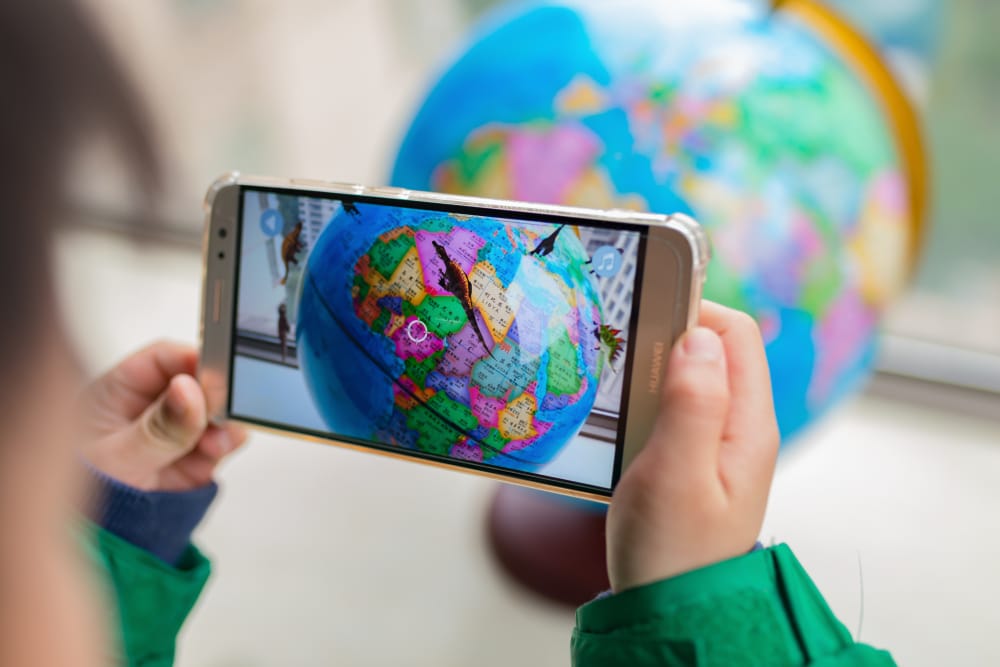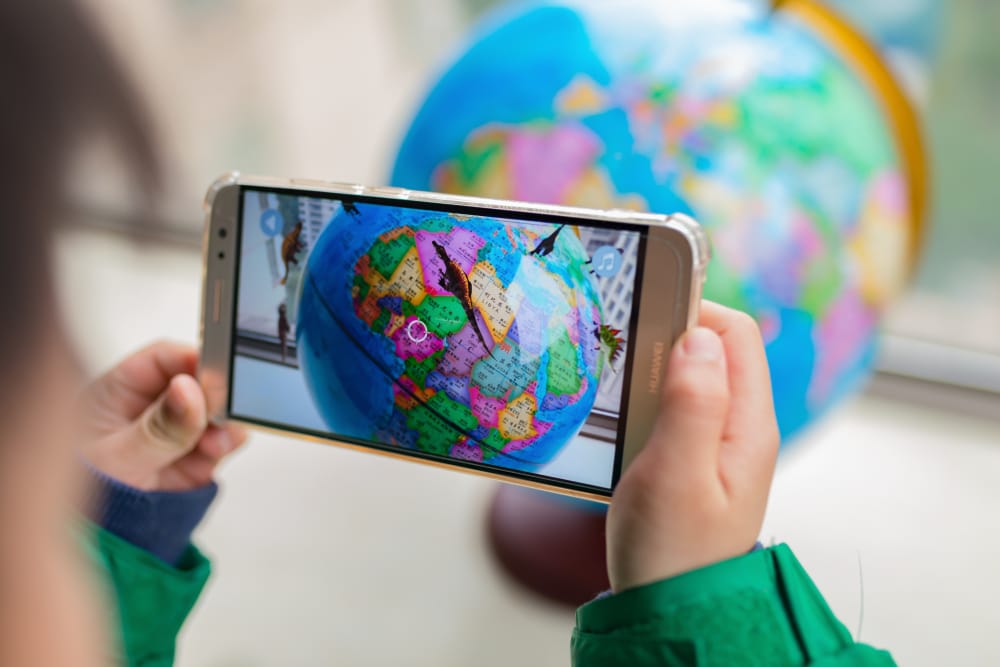London’s National Theater recently made headlines for its new augmented reality (AR) glasses. Through cutting-edge technology, hearing impaired individuals are now able to view real-time subtitles during live, theatrical performances, allowing them a more seamless experience than ever before. This concept underlines how AR is valuable not just for its entertainment ability, but its practical utility. Augmented reality in retail is more than just marketing. It’s about guiding the consumer along the path to purchase and offering practical tools when they need them most.
AR elements in video marketing provide an immersive customer experience that builds brand affinity. These programs establish a digital map during the consumer’s path to purchase, offering all the information they may need on a product with just a tap on their phones. Brands who understand the importance of augmented reality in retail recognize it’s not just a fad, but a transformative technology for the entire industry.
Using Augmented Reality in Retail to Aid Consumers
One promising use for AR in retail is its ability to assist disabled patrons, as seen with the National Theater in London. One high-profile pilot program helped show how this technology could be used to assist in-store shopping.
The program allowed consumers who use wheelchairs to use their smartphones to navigate the store, discover products, and view items out of their reach. The program also allowed them to gain information about the product, down to the expiration date, and mark it for their virtual baskets. Then, a staff member assisted in picking up the items and checking them out. The program participants were pleased with the system and reported it helped them gain a greater sense of independence when shopping.
AR improves in-store experiences for consumers across the board by allowing them to independently search the shopping aisles. It also provides a marketing opportunity for brands, as AR strategies encourage product interaction. This mobile phone integration is a strategy Shopkick implements to guide in-store traffic and boost customer engagement with a brand or product. By offering consumers kicks (rewards points) for scanning product UPCs with their phones, Shopkick is able to guide these shoppers right to the shelf, and further incentivize them to handle products physically. This unique combination of incentive and proximity marketing helps a brand deliver a powerful message when consumers are in a promising purchase mindset.
Using AR Video to Create Memorable Messages
Combining AR and video is another method of merging two powerful marketing mediums. Consumers are increasingly shifting to mobile platforms for their everyday video viewing. In fact, one-third of all online activity is spent watching video. It’s expected that mobile devices will be the primary driver of video ads over the next four years. Part of this growth comes from the simplicity of delivering AR content via these platforms.
 Starbucks rolled out an innovative AR program at its largest location in late 2017. Using a mobile app, users were given a virtual tour of the site as they learned about all of the store’s equipment. Upon completion, they received a badge that they could trade in for a special selfie filter. This major event garnered a lot of attention, but also provided an excellent practical example that brands can emulate in perfecting an AR campaign. Here are some of the techniques used by Starbucks.
Starbucks rolled out an innovative AR program at its largest location in late 2017. Using a mobile app, users were given a virtual tour of the site as they learned about all of the store’s equipment. Upon completion, they received a badge that they could trade in for a special selfie filter. This major event garnered a lot of attention, but also provided an excellent practical example that brands can emulate in perfecting an AR campaign. Here are some of the techniques used by Starbucks.
- Mobile video: Mobile will soon become the primary consumption platform for video. Starbucks recognized this and created its campaign around an app to cater to it. This strategy built a more significant connection with the consumer.
- Consumer guidance: When Starbucks provided an in-depth tour of a major company property, it helped build transparency for the brand. It also drove interest, as the consumers got to see the inner workings of the brand.
- Incentivized interaction: Attendees of the AR digital tour collected badges for each portion they completed. Once they received all the badges, attendees were able to trade them in for a special branded “Roastery” filter. Creating an achievement system encourages consumers to follow through. Also, providing branded content as a reward builds brand affinity.
The trend in AR video marketing is about utility. Brands are no longer treating AR as a novelty, but instead are using it to find ways to improve the customer experience. AR helps establish an immersive experience which can inform consumers about a brand’s products.
Third-party app partnerships offer brands a way to enhance their existing mobile marketing programs by harnessing the power of augmented reality in retail.
It’s also an innovative way to introduce new products to consumers. As AR experiences are limited, brands that use them in unique ways gain significant attention. That low competition won’t last long, as most marketers recognize augmented reality’s potential to build fully immersive experiences.
Third-party app partnerships offer brands a way to enhance their existing mobile marketing programs by harnessing the power of augmented reality in retail. As AR can be expensive to implement, third parties provide a more cost-effective path to market entry. Many of these apps can help brands build video AR programs that are more than just marketing tools, but also ways to help consumers connect with and trust brands.
Shopkick offers our partners the opportunity to take advantage of innovations in mobile advertising through our popular shopping app. For more information about the benefits of our program, contact us.
Image courtesy of Freer





